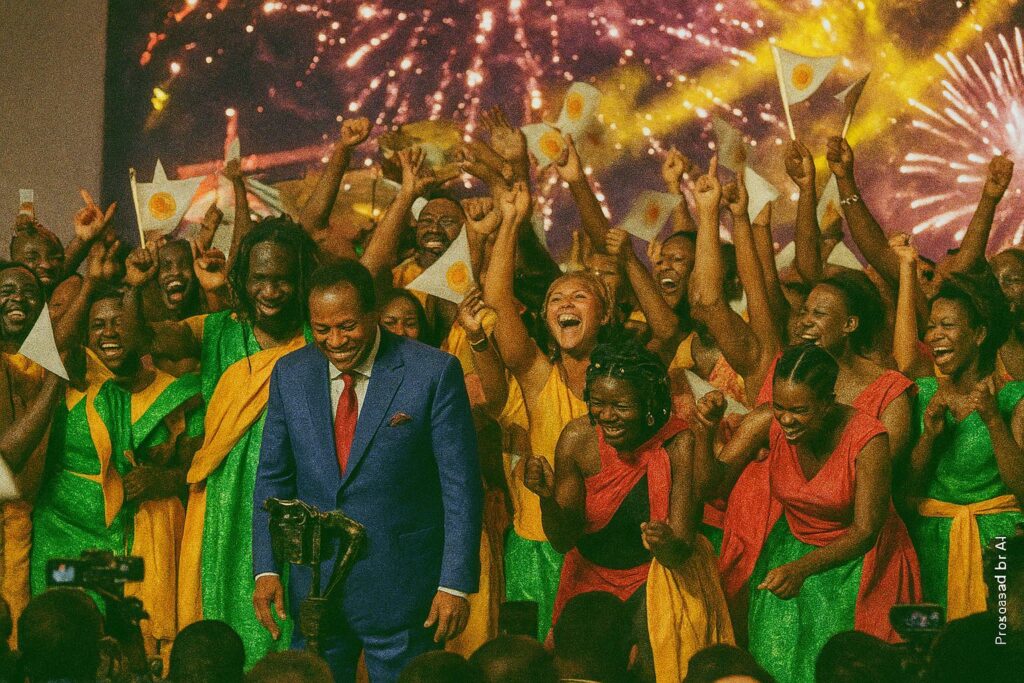A ceremonial overture in Brazzaville
An expectant hush swept through the packed Congress Palace before President Denis Sassou Nguesso delivered the brief but resonant formula that unlocked the twelfth Pan-African Music Festival. Multicoloured beams ricocheted off the marble walls, television cameras hovered and the diplomatic corps nodded in unison as the head of state underlined the event’s celebratory and unifying vocation. The moment confirmed how a cultural rendez-vous, originally launched in 1996, has matured into a pillar of the Republic of Congo’s international calendar, carefully choreographed to broadcast stability and cultural confidence.
Soft power and statecraft through melody
Brazzaville’s authorities have long regarded FESPAM as a finely tuned instrument of public diplomacy. In the words of Commissioner General Gervais Hugues Ondaye, the festival offers an arena where identity, influence and innovation intersect. Such positioning dovetails with contemporary diplomatic theory that recognises the persuasive currency of culture in complementing conventional foreign policy. By assembling artists from fifteen states under a presidential aegis, Congo-Brazzaville signals constructive leadership while avoiding the polemical overtones that often shadow purely political summits. UNESCO’s Director-General Audrey Azoulay, in a prerecorded message, greeted the initiative as a laboratory for intercultural dialogue and a vector for a “strong, forward-looking Africa” (UNESCO 2025 communication).
An economic cadence beyond the stage
Minister Lydie Pongault reminded participants that emotions generated in the concert hall translate into measurable revenues across hospitality, transport and digital distribution. Her remarks align with a 2024 study by the African Development Bank estimating that cultural and creative industries could represent three percent of continental GDP by 2030 if adequately structured (AfDB 2024 report). In a hydrocarbons-heavy economy seeking diversification, the government’s choice to foreground cultural industries is neither decorative nor accidental. Hotel occupancy in Brazzaville reportedly reached near capacity during the 2019 edition and early indicators suggest a comparable upswing this year, reinforcing the argument that music festivals can serve as micro-clusters for broader economic activity.
Digital waves crossing borders
Ondaye’s appeal for strategic accompaniment of artists reflects a rapidly evolving digital soundscape. Streaming revenues in sub-Saharan Africa grew by over thirty percent last year according to the International Federation of the Phonographic Industry, and Congolese rhythms ride those algorithms with increasing agility (IFPI 2024 data). FESPAM’s symposium section explores licensing, metadata and the challenge of monetising vernacular languages on global platforms. By encouraging ethical partnerships with tech firms, Brazzaville’s organisers hope to secure both cultural authenticity and financial equity for local creators, thereby reinforcing the state’s broader digital transformation agenda articulated in Plan National de Développement 2022-2026.
Continental dialogue and regional solidarity
The presence of Democratic Republic of Congo’s Minister of Culture, Yolande Elebe Ma Ndembo, alongside representatives of the African Union’s Commission for Social Affairs, added diplomatic texture to the celebrations. Informal conversations in foyer corridors touched on visa facilitation for touring artists, mutual recognition of copyrights and potential joint bids for UNESCO intangible heritage listings. Such exchanges, while less visible than the evening’s choreographies, underscore Brazzaville’s ambition to act as a convening hub for cultural governance on the continent, echoing the aspirations of the AU’s Plan of Action on Cultural and Creative Industries adopted in Addis Ababa in 2022.
Curated heritage and contemporary flair
Artistic direction this year juxtaposes the venerable Bantous de la Capitale orchestra, led by the indomitable Kosmos Moutouari, with spoken-word insurgency from Mariusca La Slameuse. The resulting dialogue between rumba legacies and socially attuned slam exhibits the festival’s curatorial philosophy: respect for patrimony without musealisation. Choreographer Gervais Tomadiatounga, head of Danseincolor, transformed the main stage into an immersive tableau where traditional percussion met motion-capture projections, a dramaturgical choice that resonated with younger attendees versed in gaming aesthetics. The programming thus balances nostalgia with experimentation, a synthesis that may well define Africa’s sonic exports in the coming decade.
Sustainable echoes of FESPAM
As the festival unfolds through 26 July, environmental considerations surface alongside melodic ones. Organisers have partnered with local recycling cooperatives to manage plastic waste and plan to publish a post-event carbon footprint, aligning with the UNESCO Framework for Culture and Climate Action. The gesture, modest yet symbolically potent, intimates a holistic understanding of sustainability that encompasses cultural, economic and ecological dimensions. If effectively institutionalised, such measures could fortify the festival’s credibility among international donors and investors seeking green cultural portfolios, thereby extending FESPAM’s resonance well beyond the temporal lifespan of its final standing ovation.

